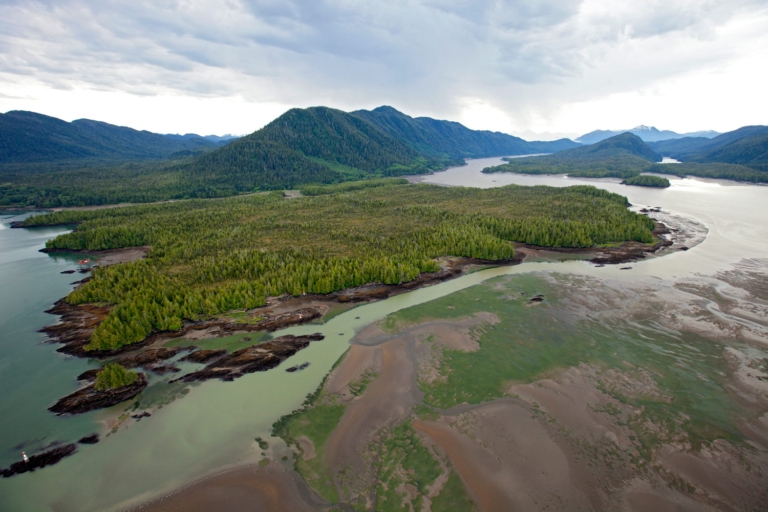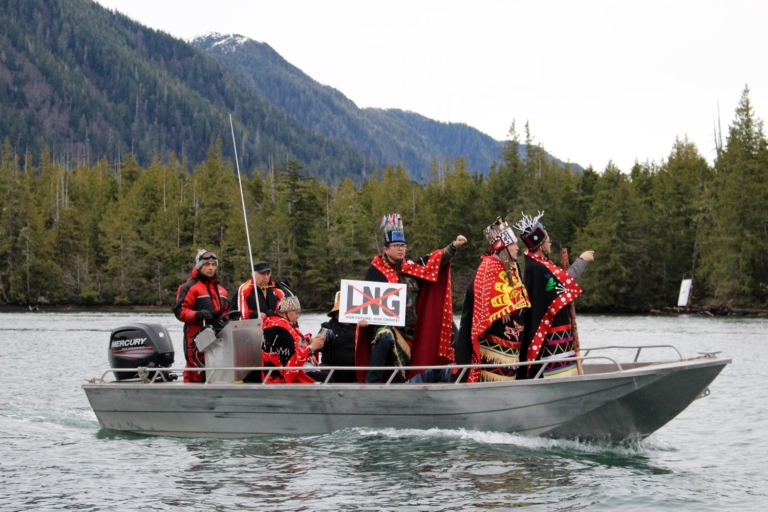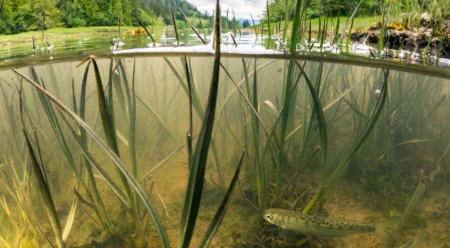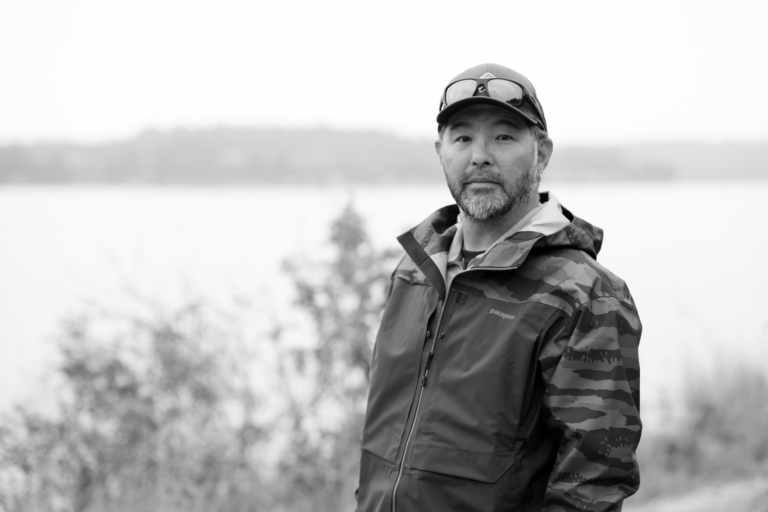Lelu Island: We Can Win This One
Lelu Island and the adjacent underwater region known as Flora Bank lie at the mouth of the Skeena River, one of North America’s great salmon superhighways. Flora Bank contains the highest abundances (25 times more) of juvenile salmon compared with all other sampled habitat in the Skeena River estuary. It is considered the most critical salmon-rearing habitat on the west coast of Canada, its fertile eelgrass flats provide food and cover for up to a billion juvenile Pacific salmon and steelhead as they acclimate to the saltwater environment each year.
Lelu Island is also the site of a proposed Petronas LNG project that, despite lack of adequate consultation with, and vehement protest by, First Nations from across the region, has recently been approved by Canada’s federal government. The liquefied natural gas facility, offloading facility and associated pipeline would remove 1.3 million cubic yards of marine material, causing nearly 500 acres of habitat loss and destabilization on Flora Bank. Additionally, up to 350 giant tanker ships per year (that’s almost one per day) would have to negotiate the treacherous, rocky waters of the Skeena approach to dock at Lelu. The prospect of a serious shipping accident and the resulting environmental disaster is not a matter of if, but when.

Aerial view of Lelu Island and Flora Bank at low tide. Flora Bank is an intertidal area used by juveniles from 40 different populations of Skeena salmon as they enter saltwater. Photo: Brian Huntington
The Petronas LNG project doesn’t look any better from a regional or global scale, either. It would create a 20% increase in British Columbia’s greenhouse gas emissions and become the largest greenhouse gas polluter in Canada. Upstream, the gas would be extracted through fracking, using more than five million cubic yards of water (equivalent to 1,529 Olympic sized swimming pools) by 2030 and producing 8.5 million tons of greenhouse gases per year (equivalent to 1,795,485 passenger vehicles driven for one year). Downstream, the end use of gas from the project would emit 55 million tons of CO2 emissions, equivalent to over 53 billion pounds of coal burned.
But we can win this one. We can stop the LNG project and protect the Skeena. Even as I type, while First Nations activists occupy Lelu Island in protest, others are gathering forces for the upcoming court battle to stop Petronas, or anyone else, from destroying Flora Bank. Legal experts say the First Nations’ case is a strong one. While the court cases are underway, the culture of protecting the land is alive and well. And the people of Northern BC have an impressive track record when it comes to protecting their land and water. The recent announcement by the Federal Government to reject Enbridge Northern Gateway, is just one example, and one of the biggest environmental victories in Canadian history. It took 10 years to win, but it’s important to note that two years ago the government gave Enbridge conditional approval, and today it’s dead. We can win this one too.

Hereditary Wet’su’weten Chiefs visit Lelu island to show their shared concerns over LNG development at the mouth of the Skeena River. Photo: Chris Timbuck
Of course, it won’t be cheap. The Skeena—undammed, unspoiled and unpolluted by hatchery genetics—represents one of the last great salmon strongholds in the face of global climate change. Whether we love the Skeena for its unparalleled steelhead and salmon fishing, or for the importance of wild places and creatures, or for what it means to the health and future of the 11 First Nations who live there, the value of Flora Bank cannot be measured in dollars.
But successfully saving it from destruction can. Please pitch in to help fund the First Nations legal case.

